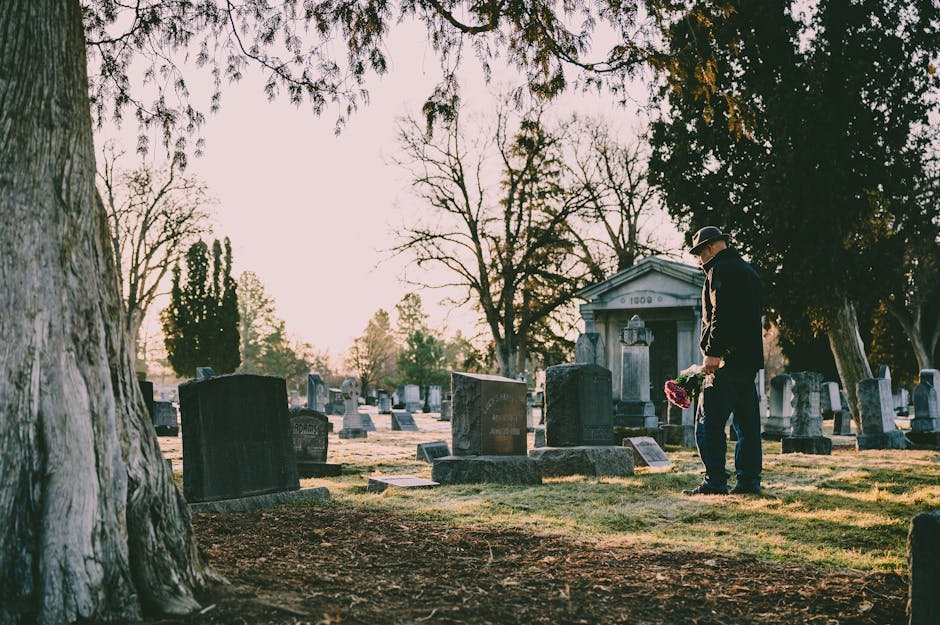Cremation Options 101: What Every Family Should Know
Understanding Cremation: A Brief Overview
Cremation is a process where the body is reduced to ashes through high temperatures. The process is chosen by many for various reasons, including cost and environmental considerations. After cremation, the ashes can be kept in an urn, scattered in a meaningful place, or used in a memorial. Religious or cultural beliefs may also influence the decision to choose cremation.
Different Cremation Options Available
Most cremation services offer a few different options to choose from. Here are some common choices you might encounter: direct cremation, traditional cremation with a funeral service, and cremation with a viewing before. Each option varies in cost and the amount of service included.
Cost Considerations for Cremation Services
When considering cremation services, it's important to note that the cost can vary depending on several factors. Here are a few things to keep in mind:
The cost of cremation services can be influenced by your location, with prices varying from city to city.
Additional services, such as memorial ceremonies or urns, can add to the overall cost.
Some funeral homes offer package deals that include cremation services, which may be more cost-effective.
It's essential to inquire about any hidden fees or extra charges that may not be included in the initial quote.
Eco-Friendly Cremation Alternatives
Eco-friendly cremation alternatives are becoming more popular for families looking for greener options. With traditional cremation, emissions are released into the air, contributing to pollution. In contrast, eco-friendly alternatives aim to reduce environmental impact by using processes like water cremation or biodegradable urns. Water cremation, also known as aquamation or alkaline hydrolysis, is a method that uses water and chemicals instead of fire to break down the body. Biodegradable urns, made from materials like recycled paper or plant fibers, can be buried to naturally decompose. These alternatives offer families a way to honor their loved ones sustainably.
Personalizing the Cremation Process
When arranging a cremation, families have the opportunity to add personal touches to make the process more meaningful. Here are some ways to personalize the cremation process:
Choosing a unique urn: Select an urn that reflects the personality or interests of your loved one.
Customizing the memorial service: Consider incorporating favorite music, readings, or photos into the memorial service.
Creating keepsakes: Some families choose to create keepsakes like jewelry or art pieces using a portion of the ashes.
Scattering the ashes: Select a location that held significance for the deceased, such as a favorite park or beach.
Steps Involved in the Cremation Procedure
The cremation process usually involves these steps:
The body is prepared for cremation, and personal belongings are removed.
The body is placed inside a container for cremation.
The container is placed in a cremation chamber, where it is exposed to high temperatures.
Once the cremation is complete, the remains are cooled and processed into ashes.
The ashes are typically given to the family in an urn or another container.
Families can choose to scatter the ashes, keep them at home, or bury them in a cemetery.
Choosing a Cremation Provider
Most funeral homes provide cremation services. You can choose a funeral home with an on-site crematory or one that partners with a crematory. Here are some factors to consider when selecting a cremation provider:
Location: Choose a provider conveniently located for your family and friends.
Facilities: Ensure the provider has suitable facilities for a respectful service.
Cost: Compare prices and services offered by different providers.
Reputation: Check reviews or ask for recommendations from friends or family.
Cremation Ceremonies and Memorial Services
Cremation ceremonies offer flexibility for families to personalize the farewell process. They can take place before or after the cremation, at a place of worship, a funeral home, or a location special to the deceased. Some families choose to have a cremation viewing before the cremation, allowing loved ones to say their final goodbyes. Memorial services can be held with or without the presence of the urn containing the ashes, giving loved ones a chance to honor and remember the departed in a meaningful way.
Honoring Loved Ones: Keepsake Ideas
When it comes to honoring your loved ones, there are various keepsake ideas you can consider. These keepsakes can serve as a special reminder of your loved one and can bring comfort during difficult times. Here are some ideas to consider:
Memory jewelry: Create jewelry that holds a small portion of your loved one's ashes.
Memorial photo album: Put together a photo album filled with memories and special moments shared with your loved one.
Personalized keepsake box: Keep mementos like letters, photos, or small items in a personalized box.
Plant a tree or garden: Planting a tree or creating a garden in memory of your loved one can be a beautiful and lasting tribute.
Customized artwork: Commission a piece of artwork that reflects your loved one's personality or captures a special memory.
These keepsake ideas can be personalized to suit your preferences and help you honor and remember your loved one in a meaningful way.
Conclusion: Making Informed Decisions about Cremation
When it comes to cremation, it's essential to make informed decisions for you and your family. Here are some key points to remember:
Take your time to research and understand the different cremation options available.
Consider your loved one's wishes and religious beliefs when making a decision.
Discuss your choices with family members to ensure everyone is on the same page.
Remember that cremation can be a more cost-effective option compared to traditional burials.
Choose a reputable funeral home or crematorium to handle the process with care and respect.
